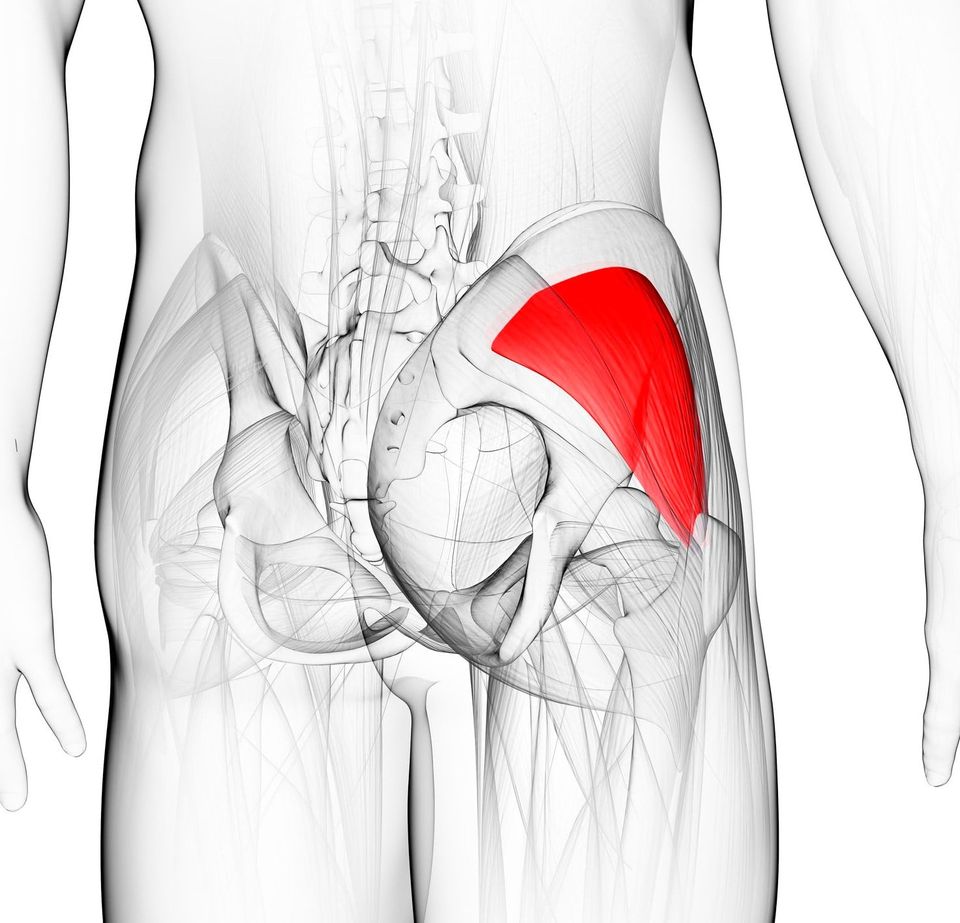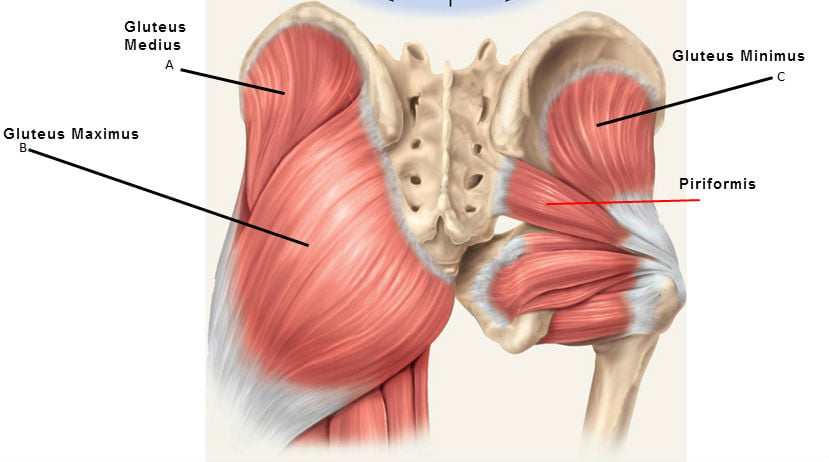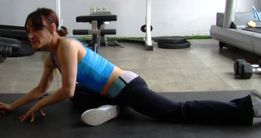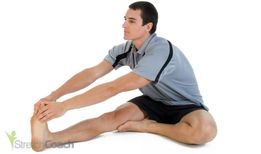GLUTEUS MINIMUS STRAIN

The gluteus minimus, which forms part of the hip along with the gluteus medius, is a fairly broad triangular muscle, attaching at the ilium of the pelvis and greater trochanter of the thigh bone, and is separated from the gluteus medius by nerves and blood vessels.
FUNCTIONS:-
• enables hip abduction and rotation of the thigh
• enables hip extension
• acts as a hip rotator (along with the gluteus medius and the tensor fascia lata)
• stabilizes the pelvis when the opposite leg is raised above the ground
RISK FACTORS:-
The following medical conditions may contribute to gluteus minimus strain:-
• sciatica
• trochanteric bursitis
• intervertebral stenosis
• hip dislocation
• piriformis syndrome
• sacroiliac joint displacement
• ankylosing spondylitis
• cauda equina syndrome
CAUSES:-
• any occupation requiring a lot of standing where standing posture is poor, increasing pressure on the hips, particularly when the weight of the body not equally distributed in between the legs
• sitting with the legs crossed for a long period of time
• lifting and carrying heavy items repetitively
• repeated jumping on the lower extremities eg.long jumpers, high jumpers
• people who keep wallets in their back pocket and sit for long periods of time may cause strain
SIGNS & SYMPTOMS:-
• severe pain in the buttocks
• pain on the outer hip
• pain on the outer thigh
• pain behind the calf radiating to the ankle
• numbness in buttocks, hip and thigh down to the ankle
• difficulty walking normally
• pain when laying on the side which is strained
• difficulty rising from a seated position

TREATMENT:-
• Anti-inflammatories
• gels and coolants
• apply cold packs to the affected region for 15 to 20 minutes two to three times a day to reduce pain and swelling
• warm compresses to the affected region for 15 to 20 minutes for pain relief (ice packs and warm compresses should not be done simultaneously for this type of strain as it can affect the resolution of the symptoms)
• hip supports to control inflammation and reduce swelling
• massage once pain and inflammation have subsided
• exercises: - once pain and inflammation have subsided
EXERCISES:-
• OUTER HIP STRETCHES:

lie on your back with one leg straight and the other leg bent at the knee. Try to touch the inside part of the knee with the foot which is bent and try to twist the hips at the same time keeping the other leg straight. Pull the knee as much as possible and maintain the position for about half-a-minute. Repeat the same manoeuvre on the other side.
• GLUTEAL MUSCLE STRETCHING:

specifically targeted for the gluteus minimus muscles. Lay on your front with one leg bent below the abdomen and the other leg kept straight. Bend forward at the waist maintain the position for about half-a-minute. Repeat for the other side.
• SITTING GLUTEUS MINIMUS STRETCHES

: targets specifically the gluteus minimus muscle. Sit with one leg straight and the bottom of the other foot against the inner part of the thigh. Now bend forward keeping the spine as straight as possible. Maintain this position for about half-a-minute and then repeat on the other side.
RECOVERY:-
- Approximately 3-4 weeks for the symptoms to resolve. Heat and cold therapy along with NSAID use may continue for about 2-3 weeks, during which no stress should be placed on the hip and pelvic region such as standing for too long or walking long distances. The more you rest the faster healing will be. Once the symptoms are resolved, a gradual return to normal activities over 7-10 days is recommended.
